< Back
15 Best Scholarly Sources Examples of 2024 You Should Know
Declan Gessel
Oct 2, 2024
Finding solid sources can feel like a never-ending struggle when you’re staring down the barrel of an essay deadline. This frustration is why tools like find sources for essay AI have become so popular: they promise to help you find what you need when you need it.
But does this tool live up to the hype? The answer is yes, but only if you know what types of sources to look for. That's where this guide comes in. We'll show you up to 15 examples of scholarly sources that you can use to make your essay stand out.
To make this process even easier, consider using Source Finder, a tool from JotBot that can help you quickly and easily find the scholarly sources you need.
Table Of Contents
What Are Scholarly Sources?

Scholarly sources are the heart of academic work. They're crafted by experts who have spent years studying their field; these sources, whether scholarly articles, research papers, or peer-reviewed journals, have undergone rigorous scrutiny. You can trust the facts and figures they present because they're backed by solid evidence from detailed studies, experiments, or comprehensive literature reviews. Scholarly sources are all about providing reliable, factual content that stands up to examination.
Author Expertise: The Credentials Matter
When dealing with scholarly sources, you can rest easy knowing they’re written by people who know their stuff. Academics, researchers, and professionals with deep knowledge of their subject matter are putting pen to paper. You’ll often see their credentials listed in the article, which adds a layer of trustworthiness. Knowing the author is an expert can make a big difference.
The Peer Review Process: Quality Control at Its Best
Before a scholarly article sees the light of day, it has to pass through the critical eye of peer review. This process involves other experts in the field evaluating the work for quality, validity, and relevance. It’s like a quality control check that ensures only the best research makes it out into the world. This rigorous evaluation is what sets scholarly sources apart from the rest.
Citations and References: The Trail of Transparency
Scholarly sources don’t just throw information at you. They provide citations and references so you can trace the origin of the facts and verify their reliability. This transparency is critical for maintaining academic integrity. It allows you to dig deeper and ensures you’re building on a solid foundation.
In-Depth Research: Diving Deep into the Details
These sources don’t skim the surface. They offer comprehensive analyses of specific topics, drawing on extensive literature reviews and presenting original research findings. You’re getting a deep dive into the subject matter, which can be incredibly valuable for your research. Scholarly sources aren’t about giving you a quick overview; they provide detailed, in-depth information.
Publication in Reputable Journals: A Mark of Excellence
Scholarly articles are often published in peer-reviewed journals or academic presses and are known for maintaining high standards. This publication process is another layer of quality assurance, ensuring the research is credible and reliable. When you see a scholarly source in a reputable journal, you can be confident it’s a mark of excellence.
Credibility: Boosting Your Work’s Trustworthiness
Citing scholarly sources isn’t just about following the rules. It adds credibility to your work, making it more persuasive and authoritative. It's a game-changer when you can back up your arguments with expert evidence. Your work stands out, and people are more likely to take it seriously.
Quality of Information: Trustworthy and Reliable
The peer review process ensures that the information in scholarly sources is accurate, reliable, and relevant. You’re not getting hearsay or speculation; you’re getting well-researched, factual content. This quality of information is crucial for building a solid foundation for your research.
Foundation for Research: Building on Solid Ground
Scholarly sources provide a solid foundation for your research. They allow you to build on established findings and contribute new insights to your field. You’re not starting from scratch; you’re building on the work of experts, which can save you time and effort.
Informed Arguments: Making Your Case
Access to high-quality research enables you to construct informed arguments and counterarguments in your writing. You’re not just guessing or relying on assumptions; you’re using evidence to support your claims. This makes your work more convincing and impactful.
Broad Access to Knowledge: Exploring All the Possibilities
Scholarly sources cover various topics and disciplines, providing a wealth of knowledge researchers can tap into. Whether you’re studying biology, history, or anything in between, there’s a scholarly source. This broad access to knowledge is a game-changer for researchers looking to explore all the possibilities.
Related Reading
• How To Find Good Sources
• Using AI For Research
• Citing ChatGPT
• How To Find Academic Sources
• How To Cite AI In MLA
• AI For Research Paper Writing
• Essay Sources
• AI In Academic Writing
• Most Reliable Sources For Research
• How To Get ChatGPT To Cite Sources
Characterizing The Best Scholarly Sources of 2024

Peer-Reviewed Articles: The Gold Standard
Peer review is critical to scholarly publishing. Journals like Nature and The New England Journal of Medicine set the bar high with rigorous review processes, ensuring the research is sound and reliable.
Interdisciplinary Relevance: Bridging Fields
The best scholarly sources connect different fields, fostering collaboration. PLOS ONE, for example, publishes research across disciplines, encouraging innovative problem-solving.
Open Access: Breaking Down Barriers
Open access has revolutionized the spread of scholarly work. Platforms like the Directory of Open Access Journals (DOAJ) offer peer-reviewed articles for free, removing paywalls and broadening access.
Data Transparency: Open and Honest
Transparency in research is gaining ground. More sources are sharing data and methods openly, which is crucial for reproducibility. Platforms like Figshare help researchers share their datasets and outputs.
Cutting-Edge Topics: Exploring the Frontier
Leading scholarly sources cover the latest advancements in AI, biotech, climate change, and more. Journals like Artificial Intelligence Review and Environmental Research Letters offer insights into current issues.
Diversity in Formats: Engaging the Audience
Beyond traditional articles, top sources offer multimedia presentations, podcasts, and video abstracts. This variety engages different learning styles and makes research more accessible.
Global Perspectives: A Wider View
With research becoming more global, the best sources include diverse cultural insights. Journals like Globalization and Health enrich academic discourse with varied perspectives.
Start Writing For Free Today With Jotbot
Jotbot is your personal document assistant and source finder. It handles AI note-taking, video summarizing, and citation finding, and it even writes essays with its AI essay writer. Join the 500,000+ writers, students, and researchers who write better and faster with Jotbot's AI writing assistant. Write more brilliantly, not harder, with Jotbot's AI writing assistant.
Start finding accessible sources with Jotbot's source finder today. Sign in with Google to get started in seconds.
15 Best Scholarly Sources Examples of 2024
1. Jotbot: The Ultimate AI Writing Tool

Jotbot is an advance for writers, researchers, and students. It’s your personal document assistant and source finder, capable of AI note-taking, video summarizing, citation/source finding, and crafting outlines or entire essays with its AI essay writer. Join over 500,000 users worldwide to write more, better, and faster with Jotbot's AI writing assistant. Write more brilliantly, not harder. Start finding sources that are accessible with Jotbot's source finder today. Sign in with Google and get started in seconds.
2. Google Scholar: A Treasure Trove of Academic Resources
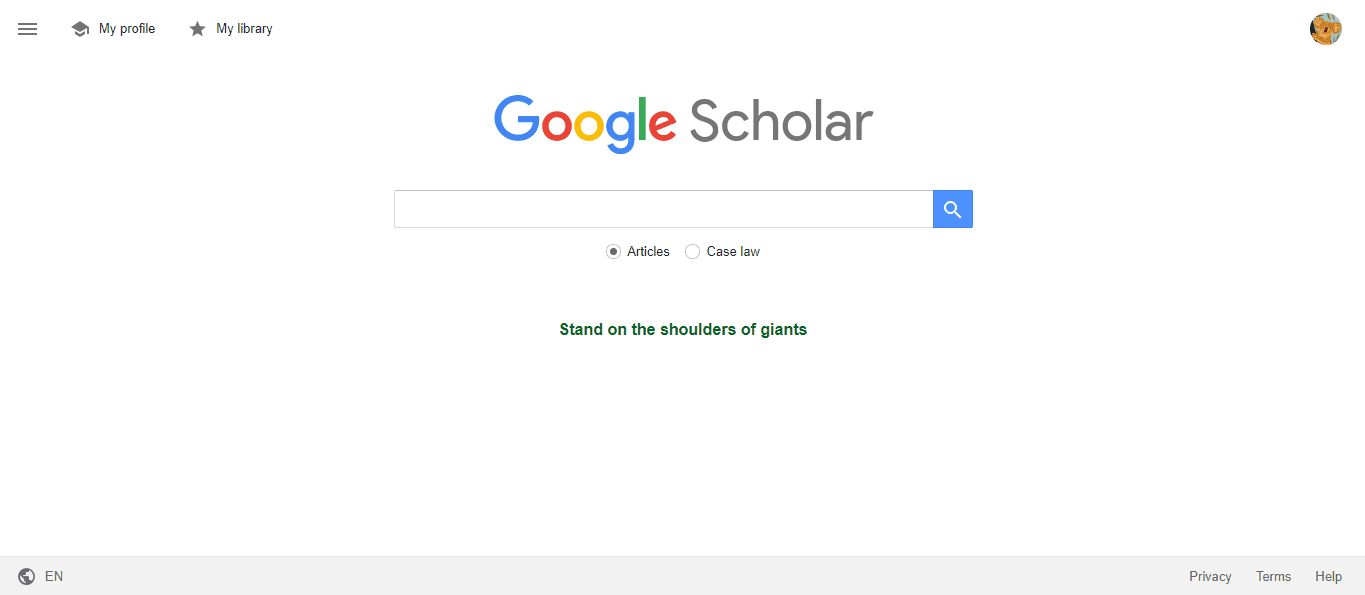
Google Scholar offers a wide-ranging search that lets users input keywords, phrases, or specific titles to retrieve relevant literature. It ranks search results based on relevance, citation count, and recency, helping you find foundational and cutting-edge research.
Google Scholar also provides citation counts to assess a work's influence and impact. Author profiles let researchers showcase their publications and track citation metrics over time, establishing academic credibility and facilitating networking.
3. JSTOR: Your Gateway to Historical Academic Content
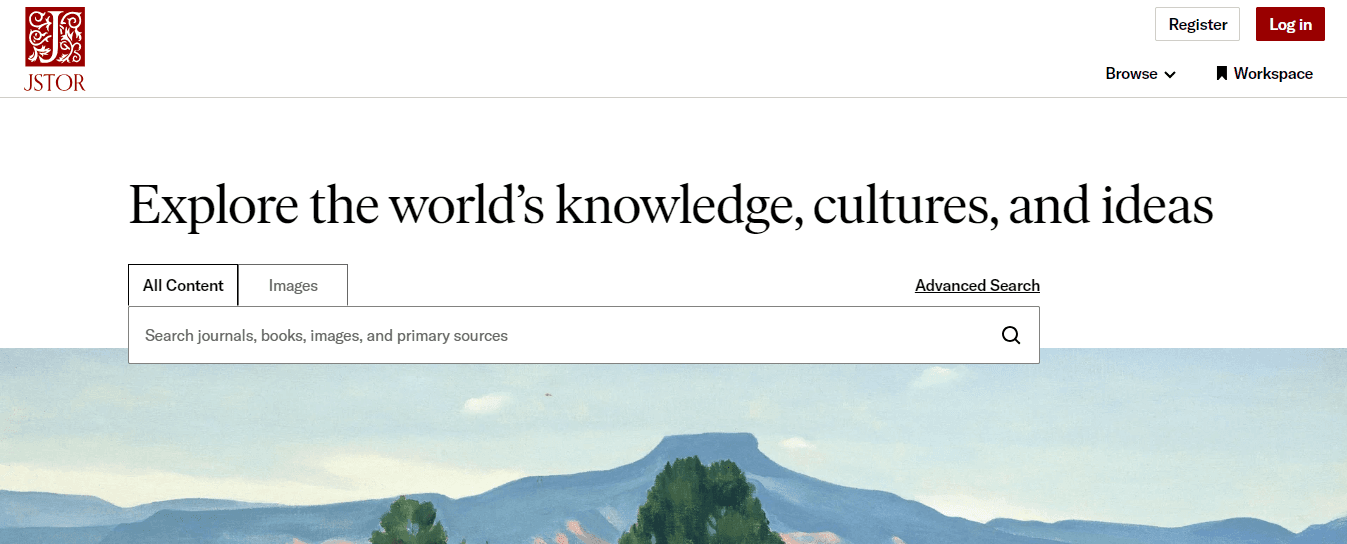
JSTOR is a digital library offering access to a rich collection of academic journal articles, books, and primary sources, primarily in the humanities, social sciences, and arts. Its comprehensive archive contains millions of resources, many dating back to the first volumes of journals. This historical depth provides valuable context for contemporary research. Users can access content through institutional subscriptions, individual access options, or a limited number of free reads for specific articles.
4. PubMed: A Lifeline for Biomedical Researchers
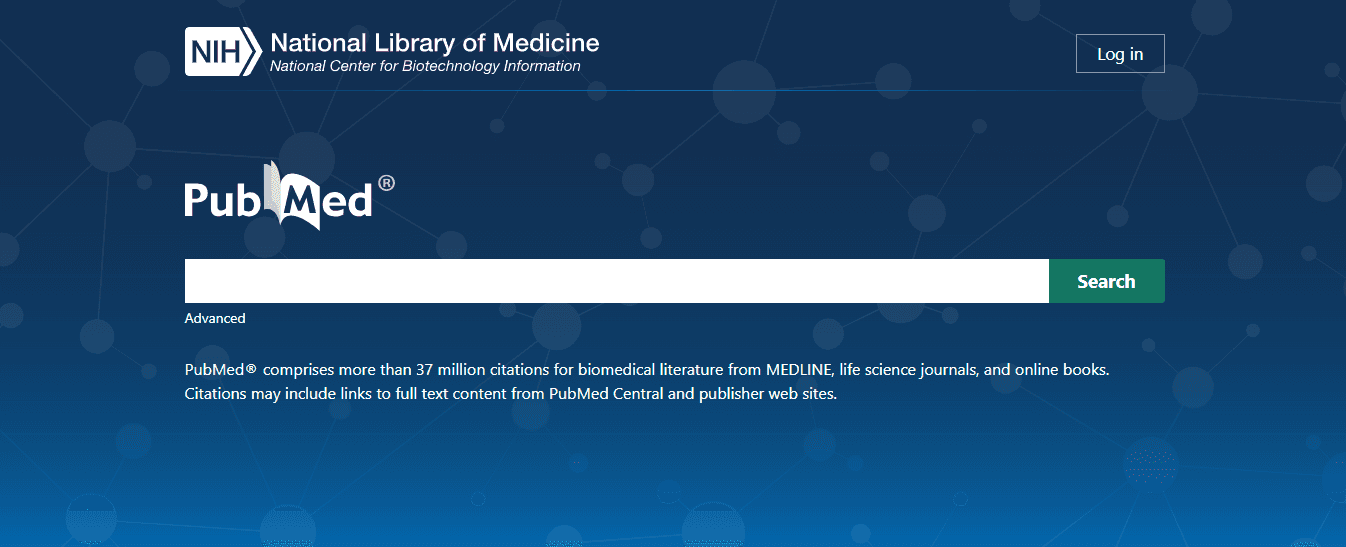
PubMed is a crucial resource for accessing biomedical literature, hosting millions of citations and abstracts for articles in the life sciences and biomedical fields. It indexes articles from various biomedical journals, allowing users to find recent studies and classic literature in health and medicine. Advanced search tools like Medical Subject Headings (MeSH) help refine searches, ensuring precise and relevant information retrieval. PubMed often provides direct links to full-text articles when available.
5. ScienceDirect: Empowering Scientific Discovery
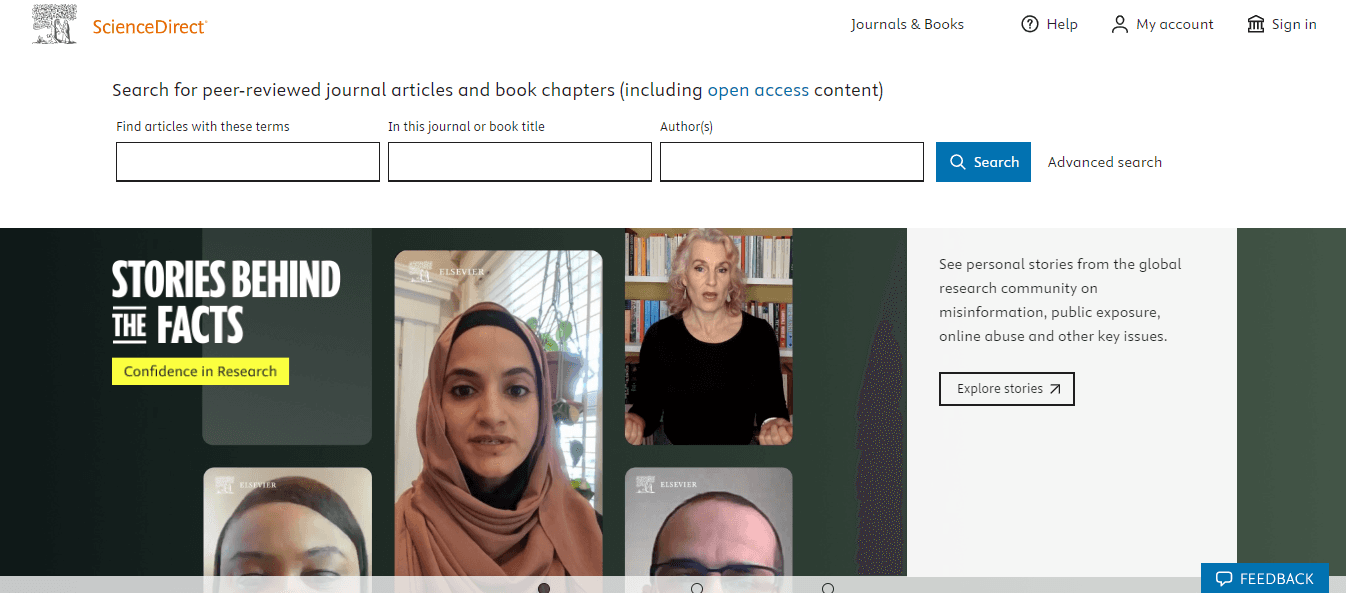
ScienceDirect is a leading platform for accessing scientific and technical research articles, primarily focusing on physical and life sciences. It houses a vast collection of journals and articles, making it a primary resource for scientific research across various disciplines, including chemistry, biology, and engineering. The intuitive user experience allows users to filter by subject area, publication type, and access type, making it easy to find specific articles and journals.
6. ERIC: The Essential Database for Educators
ERIC is a comprehensive database dedicated to education-related literature, encompassing journal articles, research reports, conference papers, and other educational resources. It includes various materials, from peer-reviewed articles to government documents and policy reports, providing a holistic view of educational research. Users can search by keywords, author names, titles, or publication dates, allowing for targeted research that meets specific educational inquiries.
7. DOAJ: Advancing Open Access Publishing
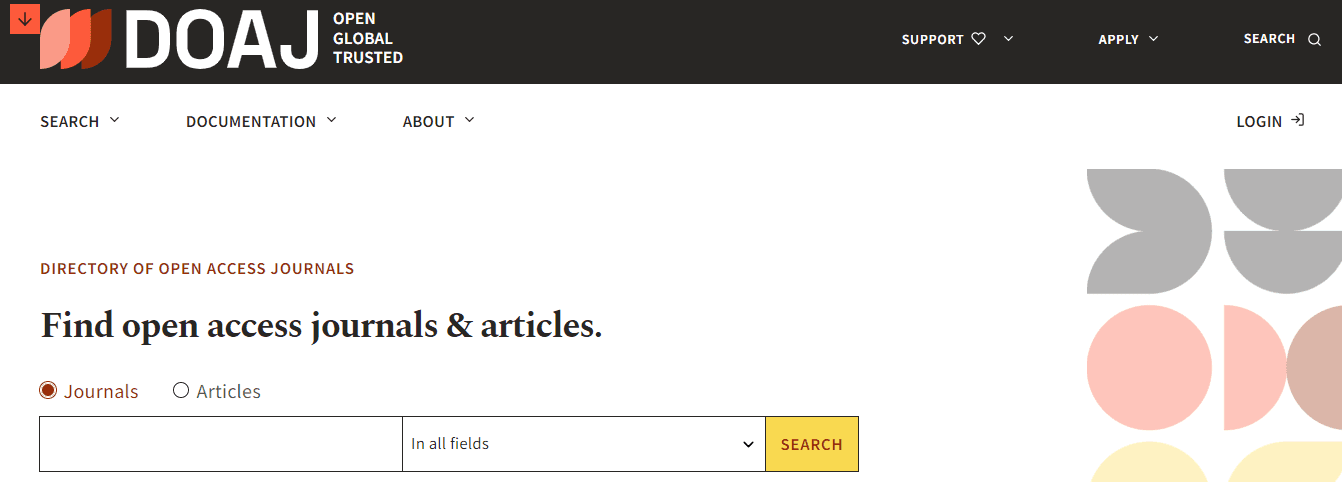
The DOAJ is an online directory that indexes and provides access to high-quality, peer-reviewed, open-access journals across various disciplines. It promotes the open-access movement, making scholarly articles freely available to everyone, enhancing accessibility and equity in research dissemination. Journals listed in DOAJ must meet stringent quality criteria, ensuring users access credible and reliable scholarly content.
8. Project MUSE: Interdisciplinary Excellence in the Humanities
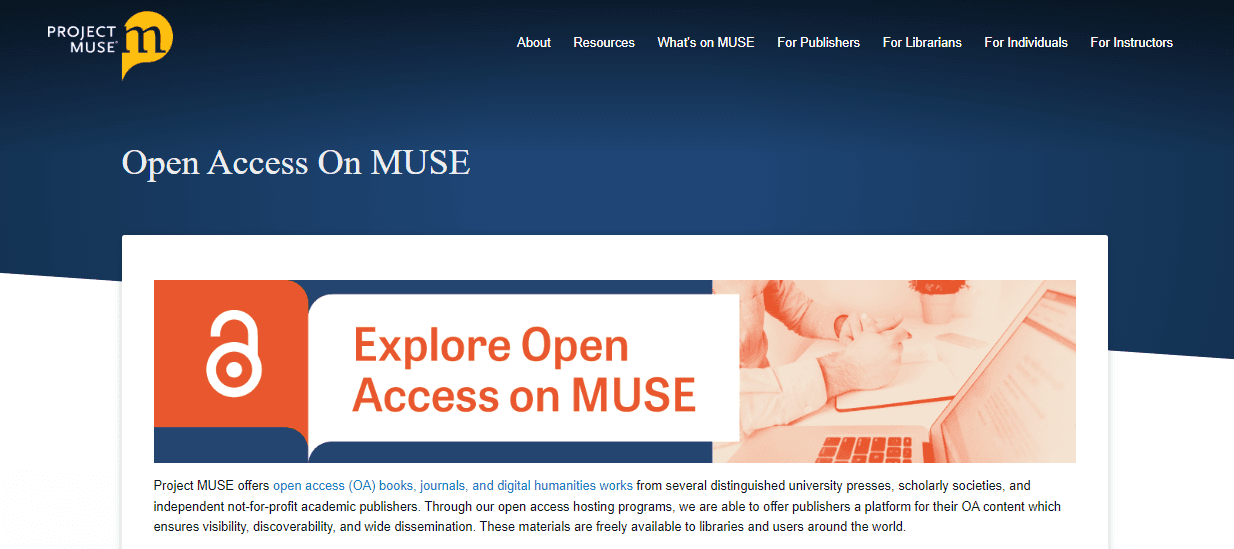
Project MUSE offers full-text access to a rich collection of scholarly journals and books, particularly on the humanities and social sciences. It covers many subjects, providing access to critical articles and books that enrich scholarly discourse across disciplines. The robust search functionality allows users to search by keyword, author, or title, with filters available for subject and type of content.
9. Scopus: A Comprehensive Database for Citation Tracking
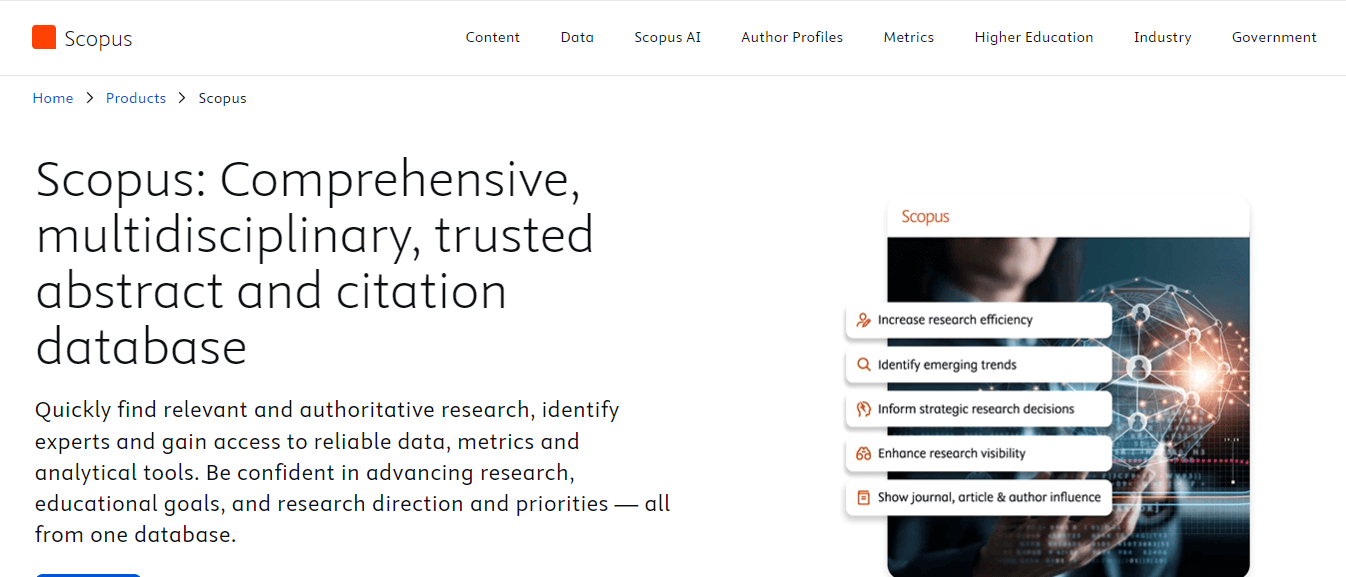
Scopus is one of the largest abstract and citation databases, covering many disciplines and providing a comprehensive scientific literature overview. Its powerful citation analysis tools allow researchers to track how often their work is cited and identify trends in their fields. The database includes journals, conference papers, and patents, making it a versatile tool for researchers across disciplines.
10. Web of Science: Navigating Interdisciplinary Research
Web of Science is a multidisciplinary research platform that provides access to numerous databases for citations across various academic fields. Users can conduct comprehensive searches for articles, conference proceedings, and patents, filtering by author, publication year, and more to obtain precise information. The platform's citation analysis tools help researchers position their work within the larger academic landscape.
11. SSRN: Fast-Tracking Social Science Research
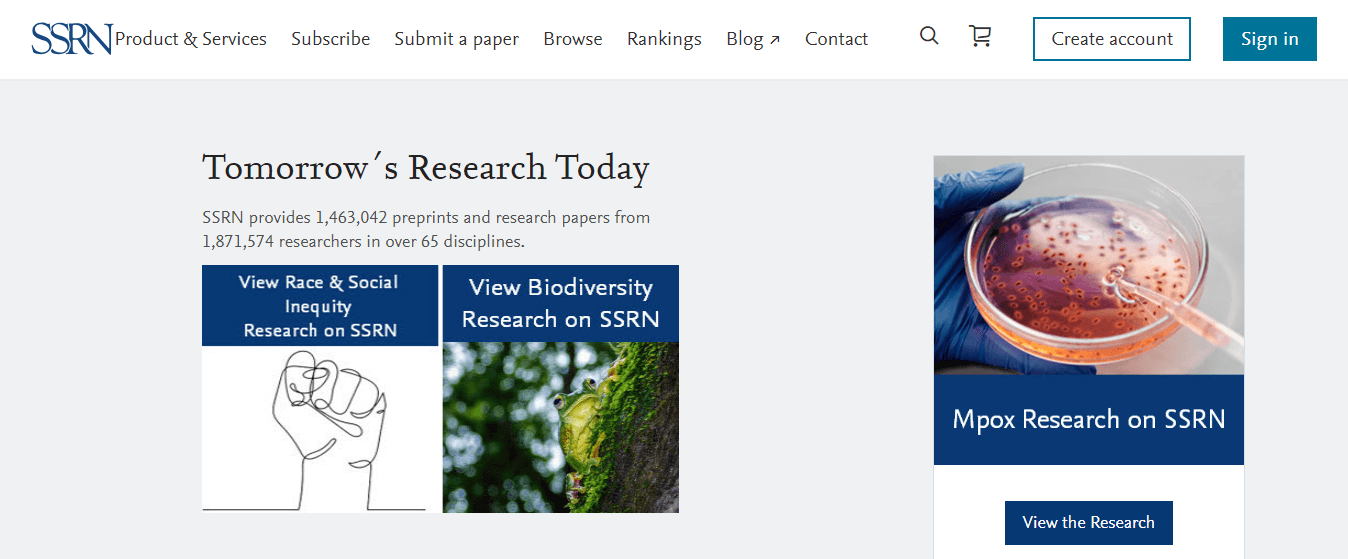
SSRN is a repository for preprints and working papers in the social sciences and humanities, providing early access to research before formal publication. Researchers can upload and share their preprints, allowing for immediate dissemination of their work. The platform fosters a collaborative environment, allowing researchers to connect over shared interests and emerging research topics.
12. PLOS: Championing Open Access in Science
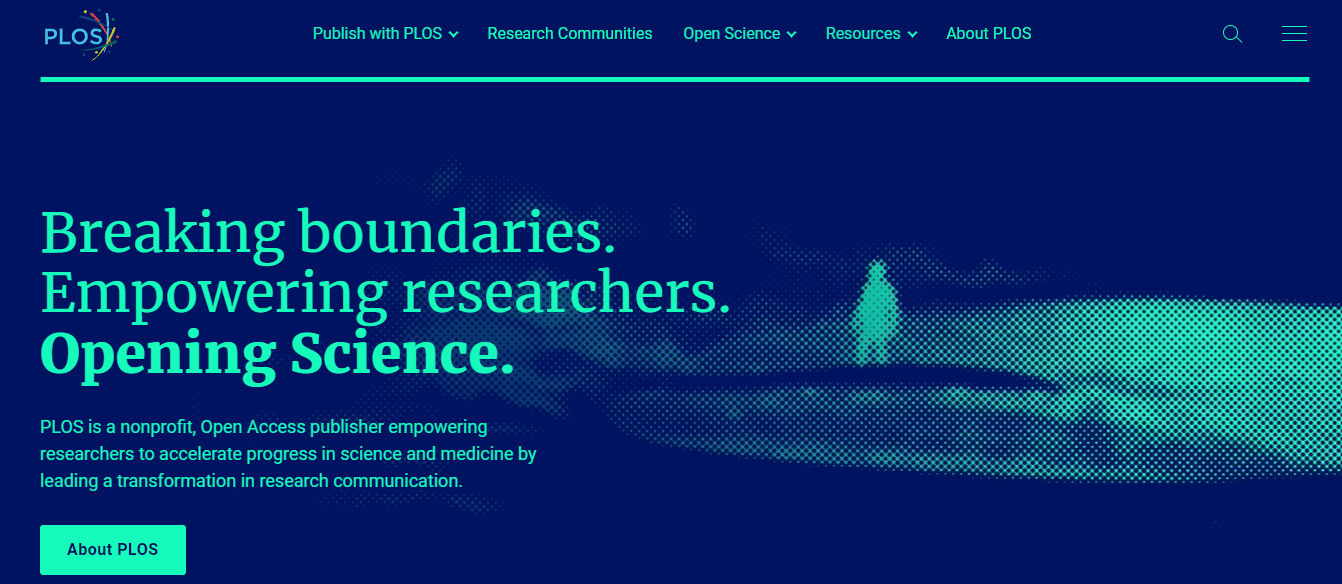
PLOS is a nonprofit publisher renowned for its commitment to open-access publishing in science and medicine. It publishes a range of journals that allow users to access articles freely, enhancing the visibility and reach of research. PLOS encourages authors to share their data and methodologies, promoting transparency and reproducibility.
13. Wiley Online Library: A Multidisciplinary Research Hub

Wiley Online Library provides access to a comprehensive collection of journals and books across various disciplines, making it a vital resource for researchers. Users can search for articles on multiple subjects and disciplines, making it suitable for interdisciplinary research. The platform's advanced search capabilities enhance the research process.
14. arXiv: Preprint Pioneer in Science and Mathematics
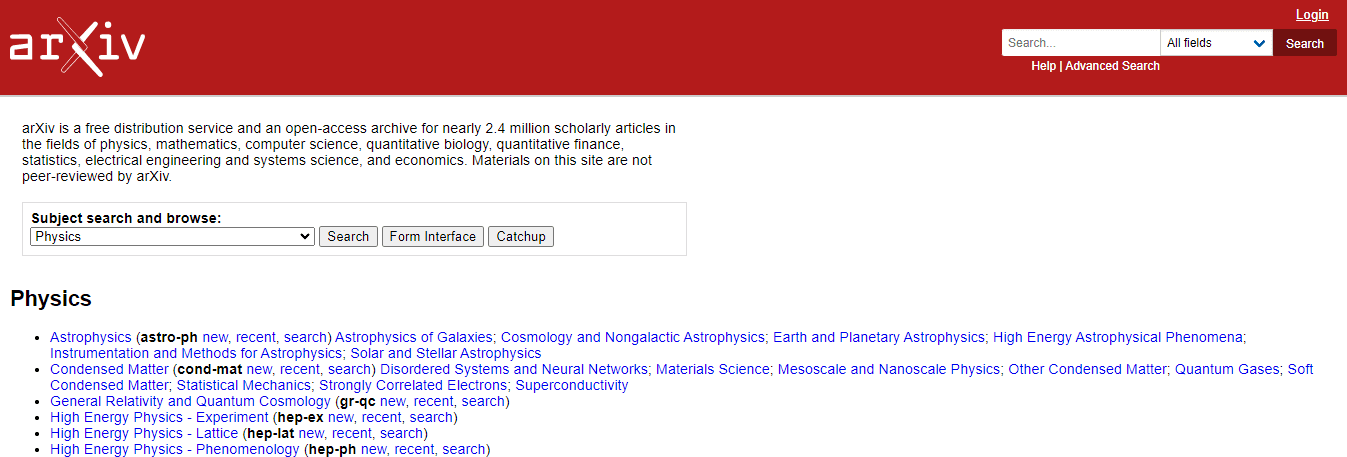
arXiv is a preprint repository that allows researchers to share their findings in physics, mathematics, computer science, quantitative biology, and more before peer review. Its rapid dissemination fosters collaboration and discussion within the research community. All content is freely available, promoting open knowledge sharing.
15. SAGE Journals: Quality Research Across Multiple Disciplines

SAGE Journals offers access to various peer-reviewed journals across the humanities, social sciences, and sciences. With over 1,000 journals, users can explore diverse topics and disciplines. Advanced search capabilities enable researchers to find articles based on specific criteria, such as keywords, authors, and publication dates.
Related Reading
• Best AI Tool For Research
• Reference Finder
• Best AI For Research
• How to Cite AI
• AI For Literature Review
• Websites Like Google Scholar
• AI That Cites Sources
• Best Academic Search Engines
• Academic Research Software
• How To Use Chat GPT For Research
• Best Research Tools For Students
How to Use Jotbot For Academic Writing
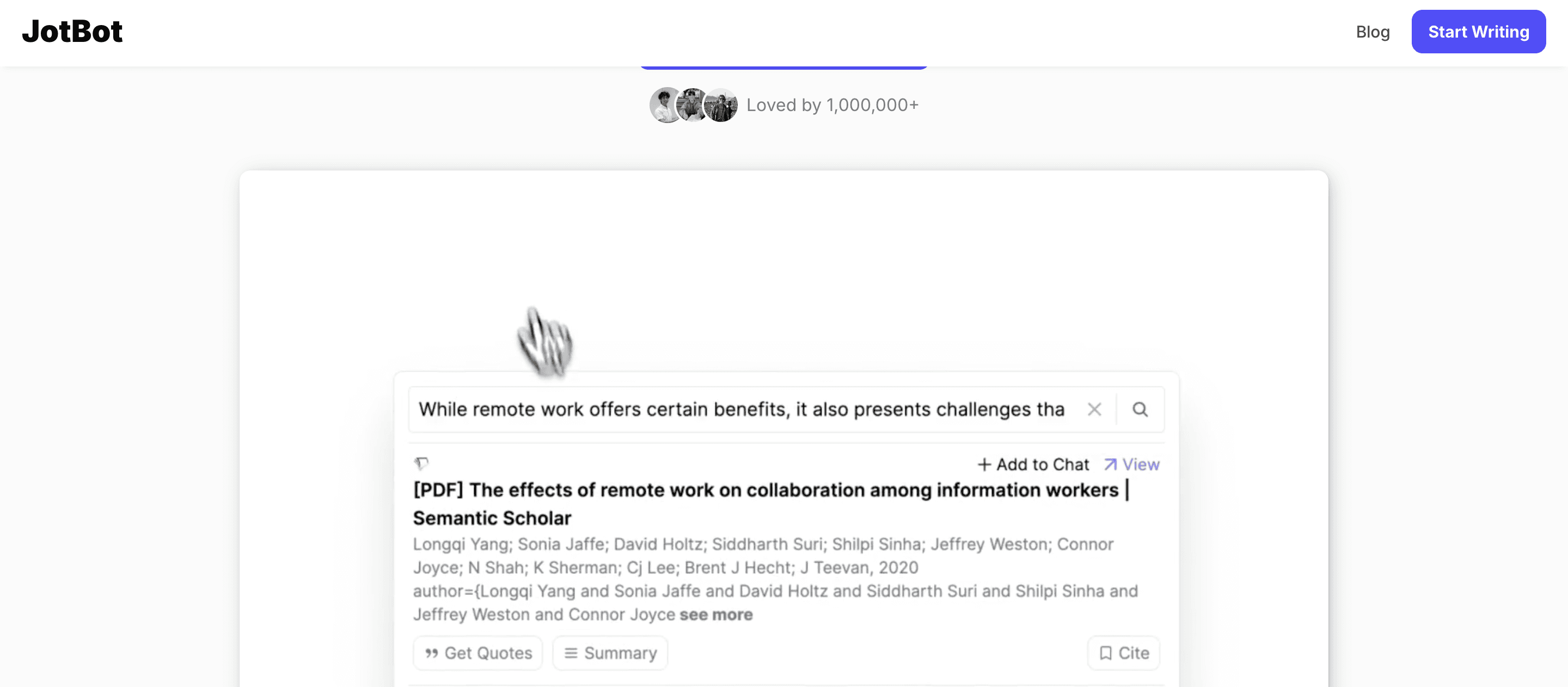
Jotbot transforms academic writing. This AI writing assistant streamlines source finding, note-taking, and essay composition, helping students and researchers boost efficiency while maintaining quality. Let’s break down how to make the most of Jotbot’s features.
AI Note-Taking: Capture and Organize Effortlessly
Forget the hassle of manual note-taking. Jotbot’s AI-powered note-taking feature captures critical real-time information from lectures, discussions, and readings. It summarizes and organizes essential points, making it perfect for busy students and researchers wading through extensive literature. Say goodbye to the anxiety of missing something important; Jotbot has it covered.
Simplify Video Content with AI Video Summarizing
Are you tired of sifting through endless video lectures? Jotbot’s AI video summarizing tool extracts vital insights and presents them succinctly. This means you can skip the fluff and get straight to what matters. Perfect for tackling online courses and recorded seminars, this feature saves time and lets you focus on the crucial content for your research or studies.
Efficient Source Finding with AI Citation/Source Finder
Finding credible sources can be a time-consuming chore. Jotbot’s citation and source-finding
tool does the heavy lifting for you. Enter your research topic, and Jotbot will pull relevant citations from scholarly databases. This ensures you use credible sources and keep your work academically sound. Focus on writing instead of wrestling with citations.
Organize Your Thoughts with AI Outlining for Essays
Need help to structure your essay? Jotbot’s AI outlining tool helps you organize your thoughts with ease. Input your thesis and main ideas, and it produces a detailed outline that serves as a roadmap for your writing. This boosts clarity and coherence, helping you write more effectively. A well-organized essay starts with a solid outline, and Jotbot makes it easy.
Get a Head Start with AI Essay Writing
Need to draft an essay quickly? Jotbot’s AI essay writing feature generates content based on your outlines and research. You can tweak the draft to match your voice and style, ensuring your unique perspective shines through. This feature is perfect for tight deadlines and allows you to produce quality work without sacrificing your personal touch.
Jotbot is your personal document assistant and source finder. Jotbot does AI note-taking, AI video summarizing, and AI citation/source finder; it writes AI outlines for essays and even writes entire essays with Jotbot’s AI essay writer. Join 500,000+ writers, students, teams, and researchers worldwide to write more, write better, and write faster with Jotbot's AI writing assistant.
Write more brilliantly, not harder, with Jotbot's AI writing assistant. Start finding sources free with Jotbot's source finder today — sign in with Google and get started in seconds.
5 Tips To Make Research That Stand Out
1. Sharpen Your Focus with a Clear Research Question
A straightforward research question is your North Star, guiding every step of your journey. Start by asking yourself what exactly you're trying to uncover. Broad questions lead to scattered research. For example, instead of “How does technology impact education?” try “How does AI in education influence student engagement in online learning environments?” This specificity ensures your study is targeted and easy to follow, making it stand out for its clarity and precision.
2. Lean on High-Quality, Peer-Reviewed Sources
Your research is only as strong as the sources it stands on. Peer-reviewed articles are your best friends because experts have vetted them. To find these gems, use scholarly databases like Google Scholar, JSTOR, or SAGE Journals. Citing up-to-date studies bolsters your arguments and shows that your work reflects the latest advancements in the field. Remember, a mix of reputable sources tells readers you've done your homework.
3. Commit to Methodological Rigor
Methodological rigor is all about choosing the right approach for your research question and sticking to it. Consistency is critical whether you're diving into interviews for qualitative insights or crunching numbers with quantitative methods. Clearly explain your chosen methodology. This transparency allows others to replicate your work and builds credibility. And don’t forget to minimize bias—use techniques like random sampling to keep things objective.
4. Make Your Data Pop with Clear Visualizations
Data visualizations can make or break your research. A well-crafted chart or graph can turn dense data into digestible insights, drawing readers in and keeping them engaged. Use tools like Tableau, Google Charts, or Excel to create professional-looking visuals. Choose the right type of visualization for your data, double-check for accuracy, and keep it simple. Overloading your visuals can be more apparent rather than more transparent.
5. Contribute Something New to the Conversation
Research that stands out pushes boundaries. Conduct a thorough literature review to spot gaps or unresolved questions in existing studies. Then, position your work as a response to these gaps. This could mean focusing on an understudied aspect of a well-known issue or challenging an established theory. Highlight how your work adds to the field, and make this clear in your introduction and conclusion.
Write Smarter With Jotbot's Source Finder — Start Writing for Free Today
Jotbot is a powerful tool for writers, researchers, and students. It functions as a document assistant and source finder, combining AI note-taking, video summarizing, citation finding, outlining, and even essay writing. With Jotbot, more than half a million users worldwide write more brilliantly, not more complexly. Sign in with Google and start finding sources for free today.
Related Reading
• Sourcely
• AI Research Tools
• Elicit AI
• Scisummary
• Scholarcy AI
• Consensus AI Tool
• Mendeley Alternatives
• Cite This For Me Alternative
• Academic Sources Examples
• How to Find Scholarly Sources
• List of Scholarly Sources
• Examples of Peer Reviewed Sources
• How to Cite a Book
• How to Cite an Article
• How to Cite
• How to Cite a PDF
• How to Cite Multiple Authors MLA
• How to Cite a Website in Text
• How to Cite a Lecture
• How to Cite ChatGPT
Write more, better, faster.
Your personal AI document assistant












